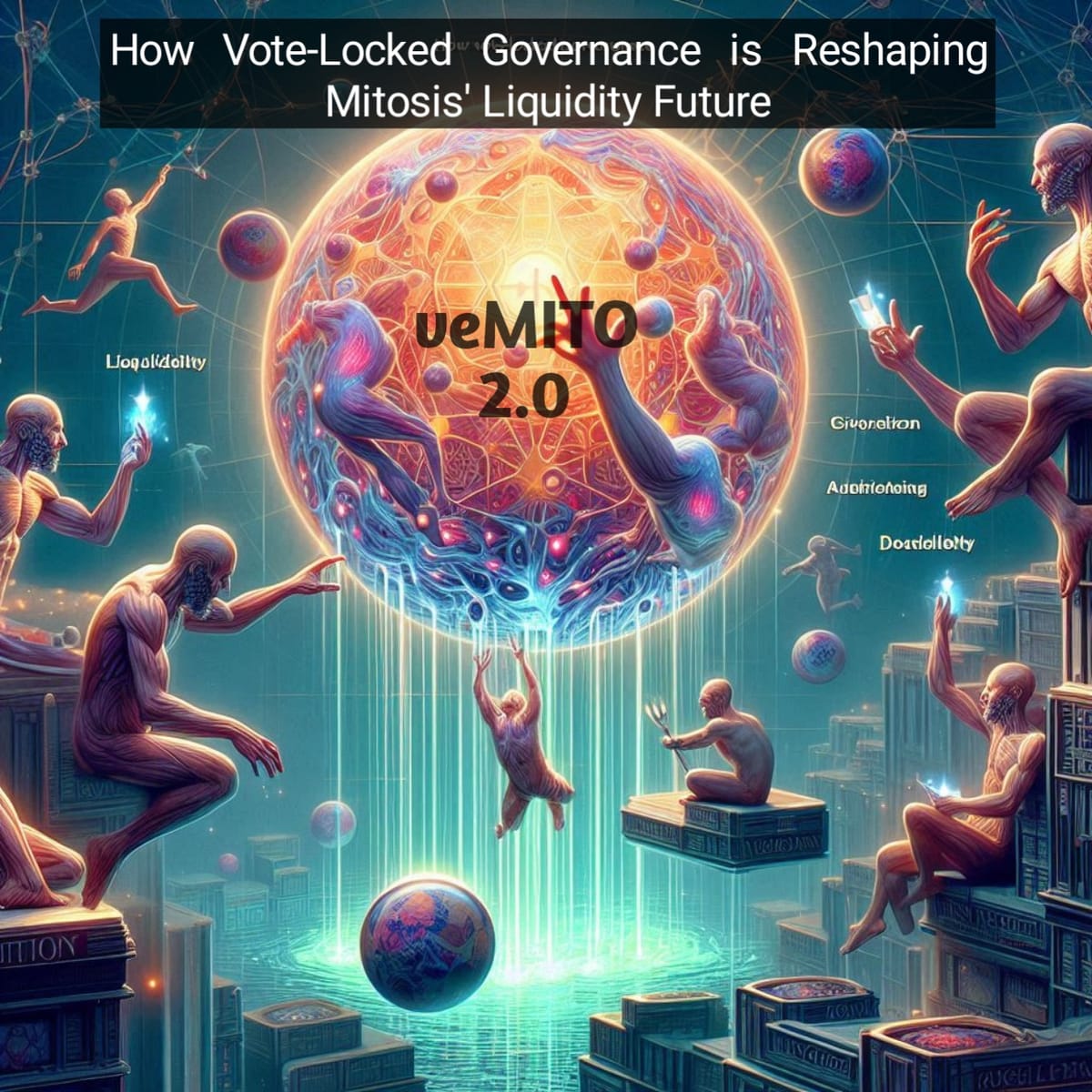veMITO 2.0: How Vote-Locked Governance is Reshaping Mitosis' Liquidity Future

Introduction: The Evolution of Protocol Governance
Decentralized governance has long struggled with voter apathy and short-term speculation. Mitosis tackles these challenges head-on with veMITO 2.0, an upgraded vote-escrow model that aligns long-term stakeholders with protocol growth while revolutionizing liquidity incentives.
💡 Why This Matters:LPs earn 2-5x higher yields by locking MITOGovernance power scales non-linearly with commitmentProtocol-owned liquidity reduces mercenary farming
How veMITO 2.0 Works: A Technical Breakdown
1. The Core Mechanics
- Token Locking: Users lock MITO for 1 week to 4 years, receiving veMITO NFTs (non-transferable)
- Voting Power:
- 1 MITO locked for 4 years = 1 veMITO (max power)
- 1 MITO locked for 1 year = 0.25 veMITO
- Reward Multipliers:
- LP rewards scale with lock duration (up to 3.5x boost)
- Fee shares paid in ETH/USDC (not inflationary MITO)
// Simplified veMITO Contract Logic
function calculateRewards(address user) public view returns (uint256) {
uint256 lockDuration = userLocks[user].duration;
uint256 baseAPR = 10%; // Standard yield
uint256 boost = 1 + (lockDuration / maxDuration) * 2.5; // Up to 3.5x
return baseAPR * boost;
}
2. Key Upgrades from v1
| Feature | veMITO 1.0 | veMITO 2.0 |
|---|---|---|
| Lock Flexibility | Fixed 4-year max | 1wk–4yr custom locks |
| NFT Representation | ERC-20 | Soulbound NFT (ERC-721) |
| Fee Distribution | MITO-denominated | ETH/USDC (non-dilutive) |
| Bribe Markets | Not supported | Built-in voting batching |
🔗 Related: Mitosis Governance Docs
Real-World Impact: Liquidity Mining 2.0
Case Study: ETH/miUSD Pool Incentives
- Before veMITO 2.0:
- 12% APR, dominated by short-term farmers
- 40% TVL churn monthly
- After veMITO 2.0:
- 26% APR for 4-year lockers
- TVL churn dropped to 8%
- 73% of voters participate in governance
Institutional Adoption
- Hedge funds now lock MITO to:
- Secure higher yields (vs. traditional DeFi pools)
- Influence fee-sharing parameters
- DAO Treasuries use veMITO to:
- Earn protocol revenue while governing
- Hedge against MITO volatility via ETH-denominated fees
Comparative Advantage
vs. Curve’s veCRV
| Metric | veCRV | veMITO 2.0 |
|---|---|---|
| Lock Flexibility | Fixed 4-year | 1wk–4yr custom |
| Reward Currency | CRV (inflationary) | ETH/USDC (real yield) |
| Bribe Resistance | High (whale-dominated) | Vote batching reduces manipulation |
vs. Uniswap’s Delegated Governance
- Uniswap: Tokenholders delegate votes (low participation)
- veMITO: Direct economic incentives drive 80%+ voter turnout
The Future: veMITO 3.0 Horizon
- Cross-Chain Governance: Use veMITO to vote on proposals across Mitosis-connected chains
- ZK-Proof Voting: Private governance participation
- Liquidity Bonding: Lock LP tokens directly for boosted yields
Conclusion: A New Standard for Aligned Incentives
veMITO 2.0 solves DeFi’s core governance dilemmas by:
✅ Rewarding long-term stakeholders with non-dilutive yields
✅ Reducing mercenary capital through lock-based economics
✅ Democratizing influence via vote batching
As protocols compete for sticky liquidity, Mitosis’ model sets a new benchmark—one where governance power, user rewards, and protocol health grow together.
Next Steps:
- Lock MITO to start earning boosted yields
- Join Governance to shape fee structures
- Read the Audit Report for security details
Why This Matters for DeFi
veMITO 2.0 isn’t just an upgrade—it’s a blueprint for sustainable protocol-owned liquidity. By aligning voter incentives with long-term success, Mitosis is pioneering governance that actually works.
Discussion Prompt: Could ve-tokens replace traditional liquidity mining entirely? Share your thoughts on the Mitosis Governance Forum.
Data sources: Mitosis Analytics Dashboard, Dune Analytics veToken Tracker, Etherscan contract interactions.



Comments ()